Projects
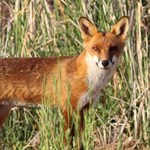
Impacts and management options for introduced predators
1.1
Feral cats and foxes, as well as changed fire regimes and introduced herbivores, have caused many species extinctions and remain a serious threat to Australia’s vertebrate species, especially its mammals. This research aims to find the best management actions to reduce the impacts of feral predators, and help restore native animal populations including threatened species.
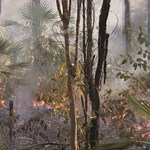
Responses of threatened species to cats and fire management in Kakadu and northern savannas
1.1.1
The project is compiling and analysing a large dataset on the occurrence of cats, native mammals and fire to evaluate landscape-scale relationships in Kakadu and the Top End . It will also analyse and document responses of native reptiles and mammals to cat-exclusion at established fenced sites in Kakadu National Park.
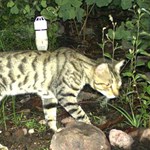
Feral cat distribution, abundance, management and impacts on threatened species: collation and analysis of data
1.1.2
This project will improve our understanding of feral cat impacts and how to mitigate those impacts. It will collate and analyse large and diverse sets of data to estimate cat distribution and abundance, and measure predation rates by cats on birds, reptiles and mammals, and to identify the ecological traits that make some species more susceptible to cat predation than others.
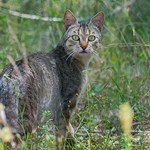
Feral cat control for threatened species in Queensland
1.1.3
This project aims to determine the effectiveness of feral cat control options, and their benefits to threatened mammals such as the bridled nailtail wallaby in Queensland. It will recommend long-term management strategies for feral cats in national parks.
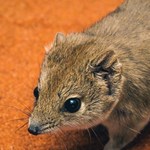
The role of feral predators in disrupting small vertebrate communities in arid South Australia
1.1.4
This project is investigating why native species persist in some refuge areas of South Australia but not others, and the role of habitat condition and especially feral predators in restricting their populations. The kowari and fawn hopping mouse are threatened and other species such as the plains mouse and crest-tailed mulgara are restricted in range.
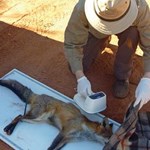
Feral predators in south-east Australia: Towards a ‘beyond the fence’ strategy
1.1.5
This project is developing new statistical methods to generate robust estimates of density of feral predators based on camera trap data. This will be useful for reintroducing threatened mammals into the broader landscape outside fenced reserves.
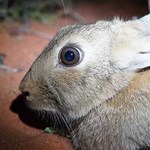
Integrated management of feral herbivores and feral predators
1.1.6
This research will uncover how feral cats respond when an abundant source of rabbits is removed from the landscape. Do they prey switch and increase their impact on native animals? Do many die of hunger? We will conduct a landscape-scale experiment at the Arid Recovery reserve in South Australia to find out.
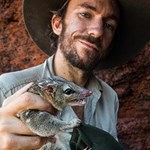
Some responses of the threatened Northern Quoll to a large-scale cat baiting program in the Pilbara
1.1.7
This project will build on an existing large-scale feral cat baiting program in the Pilbara being undertaken by WA DBCA in partnership with Rio Tinto in order to advance our understanding of how the Northern Quoll and other native species respond to feral predator control, and how to optimise future cat baiting programs more generally.
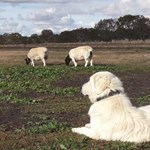
Livestock guardian dogs to protect threatened species and restore habitat
1.1.8
This project will test the value of using livestock guardian dogs (conventionally used to protect livestock such as sheep) to protect vulnerable native species from invasive predators and increase the success of ecological restoration by preventing the over-browsing of regenerating plant communities.
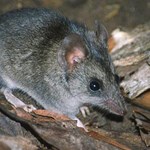
Response of the Kangaroo Island Dunnart and other threatened species to a cat eradication program
1.1.10
Controlling feral cats on biodiversity-rich islands is a high priority for the conservation of Australia’s biodiversity. This project will document the benefits of the Kangaroo Island (KI) cat eradication program on the KI dunnart and other threatened species. It will also fill knowledge gaps about the ecology and improve monitoring techniques for the KI dunnart.
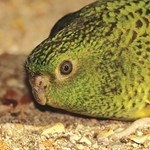
Managing feral cats to benefit the night parrot
1.1.11
Feral cats are considered a key threat to the night parrot, but cats are very challenging to manage in the remote and vast landscapes where night parrot populations have recently been rediscovered. This project will undertake a range of research on feral cats to support effective strategies to deal with the threat of feral cats around night parrot populations.
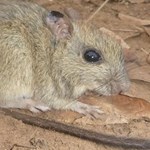
Mitigating cat impacts on the brush-tailed rabbit-rat
1.1.12
The brush-tailed rabbit-rat of northern Australia’s tropical savannas has declined dramatically. Cat predation is considered a major threat, but cat impacts are influenced by vegetation, which in turn is strongly influenced by fire.
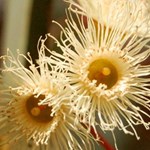
Conserving critical and threatened habitats
1.2
This project will study how best to conserve threatened ecological communities and critical habitats for threatened and endangered species across Australia. Initial focus is on the Box Gum Grassy woodlands and endangered Buloke Woodlands of the Riverina and Murray-Darling Depression Bioregions as well as Alpine Bogs and Fens.
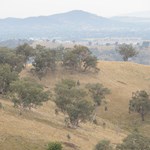
Conservation of box gum grassy woodlands and the threatened species within them
1.2.1
This project focuses on refining and enhancing management strategies for the Threatened Ecological Community of the box gum grassy woodlands of southern eastern Australia. The project aims to improve our understanding of how to manage and restore ecosystem values and critical habitat features.
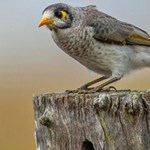
Can culling noisy miners benefit threatened woodland birds?
1.2.1.2
Noisy miner populations have expanded in fragmented agricultural landscapes, aggressively outcompeting many other smaller species of native woodland birds. This project will determine if culling is an effective method to manage the impacts of noisy miners on threatened woodland birds.
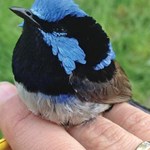
Survival and persistence of woodland birds in restoration plantings
1.2.1.3
Restoration plantings in fragmented agricultural landscapes provide habitat for declining woodland bird communities, but can they support resident, breeding populations of woodland birds? This research project focuses on the breeding success and site fidelity of woodland birds in restoration plantings in the South West Slopes Bioregion of NSW.
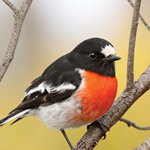
How bird communities change in relation to vegetation change
1.2.1.4
This project will examine how bird communities change at woodland restoration sites in south-eastern Australia. The project will use long-term datasets to compare changes in the assemblage of woodland birds that occupy tree plantings with birds that occupy stands of remnant vegetation.
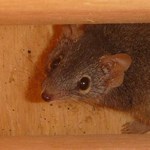
Testing the effectiveness of nest boxes for threatened species
1.2.1.5
This project aims to determine the usefulness of artificial hollows as an effective offsetting tool for tree removal in agricultural landscapes (e.g., to offset the loss of paddock trees as a result of cropping intensification and road widening).
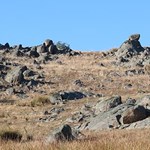
Enhancing critical habitat for the pink-tailed worm-lizard in agricultural landscapes
1.2.1.6
Box gum grassy woodland and derived native grassland, is an endangered ecological vegetation community which often occurs in agricultural landscapes. Within this community rocky outcrops provide critical habitats for a wide range of flora and fauna, such as the vulnerable Pink-tailed Worm-lizard.
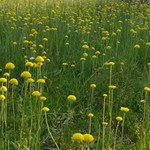
Restoring the Endangered Yass daisy
1.2.1.7
Land clearing has resulted in the loss of approximately 85% of the box gum woodland vegetation community and what remains is often highly degraded. The woodlands are important to a number of threatened ground cover species including the Yass daisy. This project addresses the problem of how to best conserve this critically endangered vegetation community.
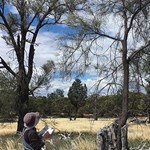
Adaptive management of endangered Buloke woodlands
1.2.2
Remaining patches of the once widespread Buloke Woodlands are degraded and failing to regenerate. The project team is working with Parks Victoria to investigate why key species are not regenerating and to test management techniques that could improve the recovery of this endangered ecological community.
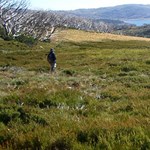
Supporting alpine peatland recovery by prioritising action on threats
1.2.3
Alpine peatlands are an endangered ecological community in Australia and are critical habitat for a large number of threatened species. They are subject to a wide variety of interacting threats that vary greatly across the landscape. Managing and recovering alpine peatlands is hampered by a lack of knowledge about how different alpine peatlands respond to different management interventions.
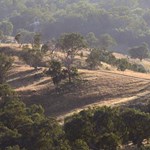
Ecosystem accounts in box gum grassy woodlands
1.2.4
Box gum grassy woodlands are a critically endangered ecosystem. This project will develop ecosystem accounts for this threatened ecological community, to demonstrate the benefits of the ecosystem to the economy, productivity of the land and human well-being by attributing values for ecosystem services.
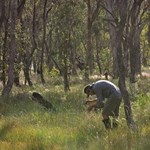
Coordinated recovery planning for threatened woodlands
1.2.5
This project will develop a framework to aid EPBC Act listing and recovery processes for southern Australian eucalypt woodlands. The aim is that this work will contribute directly to the development of future recovery plans for woodland communities in Australia, by providing a template for developing a group recovery plan for multiple ecological communities.
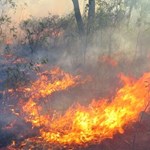
Managing fire regimes to save threatened flora and fauna
1.3
This project will improve fire management strategies and conservation outcomes to save threatened flora and fauna from extinction. On-ground trials and experiments, new data, modelled scenarios and improved management practices will assist fire management authorities to implement sustainable fire regimes and avoid further declines in threatened species.
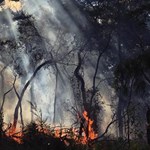
Fire and native flora
1.3.1
Altered fire regimes are a major threats to biodiversity in fire-prone landscapes. Understanding their impacts can help us effectively manage threatened plant species and ecological communities. This project will improve fire management strategies to prevent the extinction of threatened plant species.
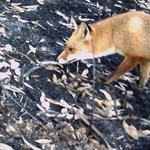
Fire and invasive predators
1.3.2
Inappropriate fire regimes and predation by red foxes and feral cats have played a major role in the decline and extinction of Australia’s native mammals. This project aims to help understand and manage the interactions between fire, invasive predators and threatened native animals in south-eastern Australia.
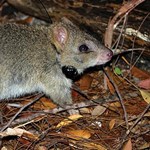
Fire, predators and the endangered northern bettong
1.3.3
The northern bettong is only found in a tiny section of Queensland’s wet tropics, and has declined severely in range in the past decade. It now persists in just two locations, one of which may only hold a very small population.
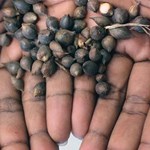
Pirra Jungku: Contemporary and traditional fire management approaches in the desert
1.3.4
Landscape-scale fire management in arid areas is challenging because of the vast areas involved. Interest in using techniques like aerial incendiary for fire management in deserts is growing, but it is unclear whether this approach will deliver the same cultural practice, fire and biodiversity outcomes, as traditional, very fine-scale burning carried out from the ground.

Managing fire to recover monsoon vine thickets on the Dampier Peninsula
1.3.5
This project aims to use remote sensing to detect changes in canopy health and fire patterns over the past 30 years in the monsoon vine thickets on the Dampier Peninsula – a threatened ecological community that are of high cultural significance to the Indigenous people on the peninsula – to measure the effectiveness of these recovery efforts.
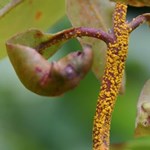
Disease and faunal declines
1.4
Researchers are working with on-ground management authorities to help control three wildlife diseases that threaten our fauna: chytrid fungus, toxoplasmosis and myrtle rust, and to prevent the extinction of affected species.
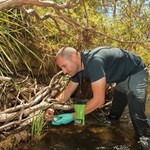
Saving threatened frogs with refuges from disease, fish predation and fragmentation
1.4.1
This project will identify and create safe havens for the Endangered spotted tree frog and threatened bell frog species. Disease caused by chytrid fungus, predation by non-native fish and habitat loss are all contributing to these species’ declines.
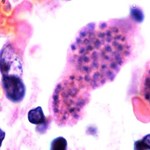
The role of toxoplasmosis in mammal declines
1.4.2
Toxoplasmosis was introduced to Australia by cats, who also continue to spread the disease. It is known that the disease affects Australian mammals, and that many Australian mammals are suffering dramatic declines. It is completely unknown, however, whether toxoplasmosis is contributing to these declines and how it compares to other threats.
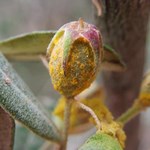
Understanding and combatting myrtle rust
1.4.3
This project will advance our understanding of the plant disease myrtle rust and help to combat its impacts, which affects both threatened and commercially important species. First detected in 2010, it has spread rapidly and caused localised plant extinctions.

Guidelines on how to treat Australian wildlife with sarcoptic mange
1.4.4
Wildlife disease is an increasingly important threat to many species of conservation concern. The impact of sarcoptic mange (Sarcoptes scabiei) on wombats is a matter of considerable concern to some members of the wider community, as evidenced by multiple submissions to the recent Senate Inquiry on Australia’s Faunal Extinction Crisis.
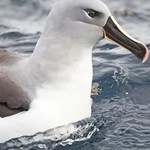
Emergency care – identifying and prioritising action to save fauna species at acute risk of extinction
2.1
This project will identify the Australian animal species at most acute risk of extinction, and identify priority management actions to prevent the extinctions. Initially this has involved mammals and birds, but the methodology is also being applied for other animal species groups where sufficient information is available.
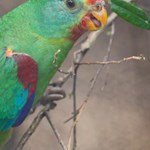
Tackling threats to endangered hollow-nesting birds
2.2
Introduced sugar gliders, habitat loss and native parasites are threatening hollow-nesting birds in Tasmania. This project will focus on managing these threats to ensure the persistence of swift parrots, forty-spotted pardalotes and orange-bellied parrots into the future.
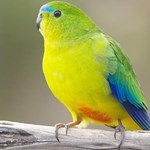
Saving the orange-bellied parrot
2.2.1
The Critically Endangered orange-bellied parrot is one of Australia’s most threatened species, with less than 50 birds remaining in the wild. A captive breeding and release program has so far failed to halt the decline of the species over several decades.
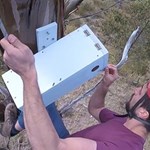
Saving the swift parrot
2.2.2
The swift parrot is a critically endangered species of migratory bird which breeds in Tasmania in summer. This project is undertaking research to better understand the threats it faces, and is developing and trialling innovative new methods to tackle these threats. The aim is to prevent the extinction of the species and to recover numbers.
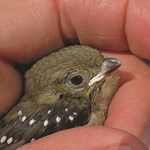
Conservation and management of the endangered forty-spotted pardalote
2.2.3
The forty-spotted pardalote is a small bird endemic to Tasmania. It has suffered severe declines and is now only found in a small part of its former range. Its main threats include habitat loss and fragmentation, introduced predators, competitors, and a parasitic fly causing severe nestling mortality. This project will increase the likelihood of the species surviving in the wild.
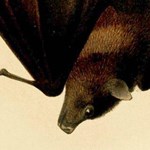
Enhancing threatened species outcomes for Christmas Island
2.3
A collaboration with Parks Australia, this project will provide planning and management for threatened species on Christmas Island. This includes conservation outcomes for the rapidly declining Christmas Island flying-fox, and for two threatened reptile species living in captivity.
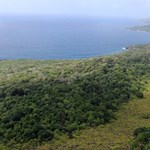
Island-wide spatial conservation planning for Christmas Island
2.3.1
This project will support conservation planning on Christmas Island by developing distribution and habitat models for threatened species and by identifying the areas across the island that are the most important to support these species.
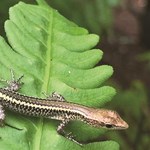
Options beyond captivity for two Critically Endangered Christmas Island reptiles
2.3.2
The blue-tailed skink and Lister’s gecko are endemic to, and were once common on Christmas Island but became extinct in the wild over the last 1-2 decades. This project is contributing to Parks Australia’s management, by evaluating options for these two species outside captivity.
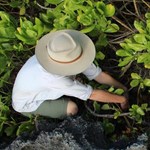
Optimising the benefits of feral cat control on Christmas Island
2.3.3
This project seeks to understand the likely impacts of cat control on invasive rats, and on the native species that rats prey on. The research will inform strategic management to optimise the outcomes from cat control on Christmas Island.
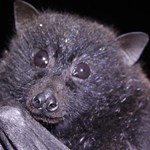
Conservation of the Christmas Island flying-fox
2.3.4
This project will consider a wide range of threats to the Critically Endangered Christmas Island flying-fox, including disease, mining and habitat loss, and invasive species.
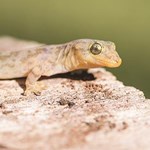
Combatting an emerging disease threatening endangered Christmas Island reptiles
2.3.5
The blue-tailed skink and Lister’s gecko are critically endangered, currently extinct in the wild, and persist only within a captive breeding program. This research will build on preliminary findings to develop a critical understanding of a novel bacterial disease, how it interacts with these two reptiles and their environments, and if and how it can be managed.
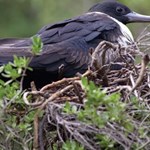
Christmas Island frigatebird: Workshop focusing on research and management priorities
2.3.6
The Christmas Island frigatebird is listed as Endangered under the EPBC Act, listed globally as Critically Endangered and is a specially listed priority bird species in the Threatened Species Strategy. The project consisted of a workshop held in March 2018 involving national and international experts.
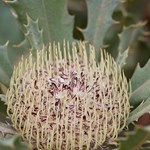
National Action Plan for Australia’s most imperilled plants
2.4
This project will create a Red Hot List of Australia’s 100 most threatened plant species and a National Action Plan to bring together key information on these species to create a prioritised plan for action. The project will also undertake field based research to fill critical knowledge gaps about poorly known but potentially imperilled species.
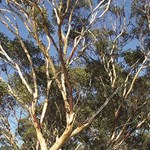
Developing a national action plan for Australian eucalypts
2.4.1
This project will identify the Australian eucalypts most at risk of extinction in order to inform the conservation planning needs of this most iconic plant group. The work of this project will thus become the basis of an action plan for Australia’s eucalypts.
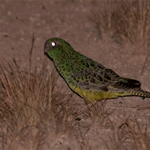
Conservation of the Night Parrot
2.5
The Night Parrot was ‘missing’ for nearly a century. Since its rediscovery in western Queensland in 2013, we are building knowledge of its ecology, the threats it faces, its status, and how to manage the landscape for its conservation. This project will build on previous research to enable land managers to make better decisions on how to conserve the parrot.
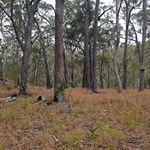
Essential research to secure the buff-breasted button quail
2.6
The buff-breasted button-quail is arguably the most poorly known of all Australian birds. The species is currently listed as Endangered under the EPBC Act with a population estimate of as few as 500 birds.
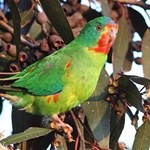
Developing a threatened species index
3.1
This project will develop and evaluate a set of indices that can provide reliable and robust measures of population trends across Australia’s threatened species. This will support more coherent and transparent reporting of changes in biodiversity across national, state and regional levels.
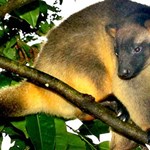
Improving threatened species monitoring
3.2
This project aims to improve the design and implementation of cost-effective monitoring for threatened species. The project will assess the extent and quality of monitoring across threatened species, and seek to understand what contributes to good monitoring.
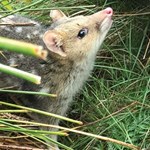
Using reintroductions to understand causes of mammal declines and extinctions at Booderee National Park
3.2.2.1
Active management in Booderee National Park has stabilised declines of many species and created conditions considered suitable to trial reintroductions of at least three regionally extinct mammals. This project will support Parks Australia in planning and monitoring the releases.
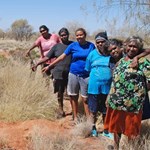
Monitoring Threatened Species on Indigenous lands: Bilbies in the Martu Determination
3.2.2.2
Martu people are traditional owners of over 14 million hectares of the western deserts, one of the last strongholds of the greater bilby. The project is combining Indigenous knowledge and Western scientific techniques to create and establish bilby monitoring and data management programs that will be implemented by Martu Kanyirninpa Jukurrpa Rangers.
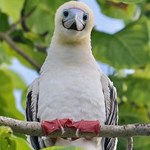
A tool for evaluating biodiversity monitoring programs in national parks
3.2.2.3
Monitoring is crucial for determining trends in plant and animal populations and their response to management. However, decisions about how much to invest in monitoring, and where, when and how to allocate monitoring effort, are complex. This project will further develop a computer simulation tool (SPOTR) for evaluating the performance of biodiversity monitoring programs.
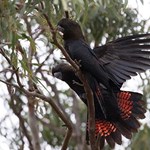
Bioacoustic monitoring of breeding in glossy and red-tailed black-cockatoos
3.2.2.4
Breeding success is a key limiting factor in population recovery for the threatened glossy black-cockatoo and south-eastern red-tailed black-cockatoo. Monitoring is important to guide conservation actions, however these species are difficult to monitor using traditional methods. This project will develop novel bioacoustic methods to monitor breeding in these species.
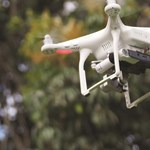
Using drones for biodiversity monitoring
3.2.3.1
This project will trial the performance of drones with thermal cameras to provide tangible advice to managers about when they should be used to augment traditional ecological monitoring approaches. It will also develop a framework for designing drone-based surveys, and evaluate the statistical and technical trade-offs between different survey designs.
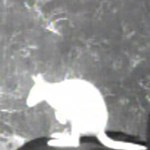
Thermal imaging for biodiversity monitoring
3.2.3.2
Traditional techniques for monitoring wildlife such as spotlighting are often too expensive, inefficient or impractical for widespread use. New technologies and new advances in survey methods have the potential to provide data that are more accurate for lower costs.
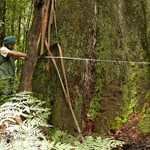
Ecosystem Accounts in the Victorian Central Highlands
3.2.4
Natural resource management is complex and involves policy compromises. Discord between environmental and economic metrics creates problems in assessing trade-offs between current and potential resource uses. Ecosystem accounts, which quantify ecosystems and their benefits for human wellbeing provide exciting opportunities to contribute significantly to the policy process.
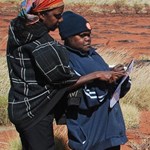
Arid Zone Monitoring: Surveys for vertebrates across arid and semi-arid zones
3.2.5
We know little about the distribution, abundance, and status of desert wildlife. This project is working with indigenous and non-indigenous partners to collate and analyse this information, to produce a collective picture of the distributions of desert species and their threats, and how these are changing over time.
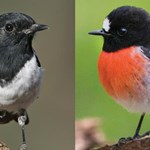
Evidence-based management protocols for recovery of multiple threatened woodland birds
3.2.6
Eastern Australia’s temperate woodlands have been significantly cleared, with 80% of their former extent already gone, and the classically Australian woodland bird community that is inseparably bound with them disintegrating.
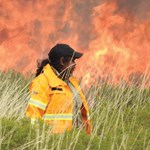
Managing jila and fire on Ngurrara Country
3.2.7
Jila and jumu (desert water sources) are critical components of the ecological and cultural fabric of desert ecosystems. The Ngurrara team aims to develop a monitoring program to chart the ecological as well as the cultural outcomes of jila management, so they can respond to changes appropriately.
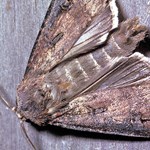
Monitoring bogong moth population change
3.2.8
Recent reports of bogong moth migration failure have caused major concerns among managers, ecologists and the general public. This project seeks to establish a robust bogong moth monitoring strategy that will provide accurate estimates of the annual variation in biomass available to mountain pygmy possums.
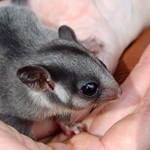
Practical adaptive management to improve threatened species conservation programs
3.3
This project will develop general guidelines and specific practical case studies that demonstrate how adaptive management techniques can be integrated into (and then significantly improve) conservation management.
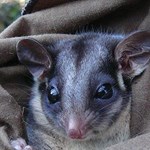
Adaptive Management for threatened mammals in the Victorian Central Highlands
3.3.2
Many species of mammals and birds are dependent on the Mountain Ash forests of Victoria’s Central Highlands. This project will use analysis of existing long-term monitoring data, new field-based experimental research and radio-tracking to strengthen the scientific evidence base of strategies to secure the long-term conservation of species dependent on these forests.
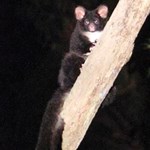
The conservation of Greater Glider populations in the Victorian Central Highlands
3.3.4
The project focuses on greater glider populations in the mountain ash forests of the Victorian Central Highlands, aiming to 1) quantify how populations in the focus region are changing across space and over time; and 2) identify the factors underpinning the observed changes.
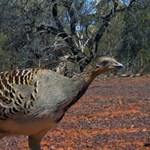
Recovering malleefowl with adaptive management of feral predators
3.3.5
The distribution and abundance of malleefowl (Leipoa ocellata) has declined markedly since the arrival of Europeans to Australia. The main identified threats include habitat loss and fragmentation, herbivore grazing, changed fire regimes and invasive predators.
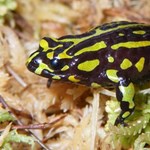
Adaptive reintroduction strategies for the northern corroboree frog
3.3.6
Reintroductions of the Critically Endangered northern corroboree frog have met limited success due to the continued effects of chytrid fungus. This project will develop and trial innovative new translocation and reintroduction approaches, to reestablish wild populations of the northern corroboree frog in the ACT.

Mitigating and managing barriers to fish passage and improving river connectivity
3.3.7
This project will fill knowledge gaps about the swimming ability and behaviour of declining native fish species; their susceptibility to altered environmental conditions; and their ability to adapt to these altered conditions. The results will inform the design of fishways around physical barriers and the management of cold water releases from dams.
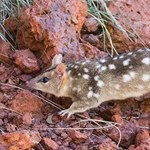
Better offsets for threatened species
5.1
This project will examine alternative strategies for achieving offset benefits for threatened species. By moving beyond traditional ‘land-based’ offsets strategies can be more cost-effective. Alternative approaches may include perpetual funds to support ongoing management of pest species, and educational signage aiming to reduce damage to beach-nesting species.
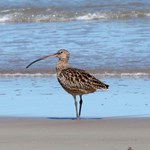
Strategic planning for the far eastern curlew
5.1.1
The far eastern curlew has experienced one of the most acute declines of any Australian shorebird species. This project will provide the knowledge needed to develop strategic guidelines for far eastern curlew conservation in the context of potential development and associated offsetting.

Improving conservation assessments and policy options for poorly known species
5.2
This project will develop new approaches for conservation status assessments for poorly known species, investigate the risks and benefits of using the precautionary principle and the application of a ‘Data Deficient’ category. The results will improve conservation outcomes for poorly known species and increase the comprehensiveness of assessment processes.
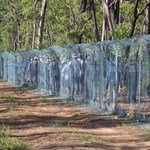
The economics of threatened species management
6.1
Saving threatened species from extinction costs money. Costs play a big part in decision-making around conservation actions, yet using economic theory in developing decision frameworks for conservation has not been done before.
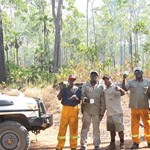
Indigenous action in threatened species research and management
6.2
This project aims to support on-country enterprise and partnership opportunities for Indigenous people to participate in protecting and recovering Australia's threatened species and their habitats.
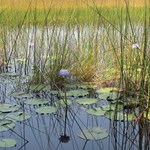
Plants and animals we care about on the Tiwi Islands
6.2.2
This research project will explore how Indigenous aspirations for conservation management are incorporated into collaborations with western conservation scientists.
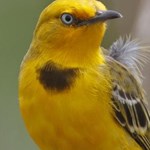
The conservation ecology of the Alligator Rivers yellow chat
6.2.3
The Alligator Rivers yellow chat is a small, bright yellow insectivorous subspecies of bird living on the floodplains of several major rivers in the ‘Top End’ of the Northern Territory including within and nearby Kakadu National Park. Despite its listing as Endangered, little research has been conducted on the bird and its habitat requirements and major threats are not well understood.
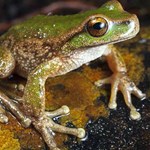
Improving communication and community buy-in to threatened species conservation
6.3
This project will explore and test ways of increasing community buy-in to threatened species conservation in Australia. Using tools such as online surveys, focus groups and workshops, it will build an understanding of how communication and messaging affects social attitudes towards the conservation of Australia’s threatened species.
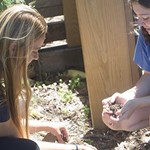
Iconic Species in Schools
6.3.4
The Iconic Species in Schools project will investigate and quantify the environmental and cultural benefits of reconnecting children with Australia’s unique biodiversity and cultural heritage. The project will use activities including habitat provision, active learning and play to deliver conservation messages to children and expose them to Indigenous culture and heritage.
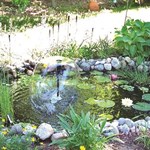
Targeting Australia’s highest biodiversity impact behaviours
6.3.5
Most biodiversity loss is caused by human behaviour, so changing harmful behaviours is critical for protecting biodiversity. In Australia, getting individuals to change to behaviours that can directly benefit threatened species is thwarted by a poor understanding within the research, governance and general communities of what individuals can do that will make a difference.
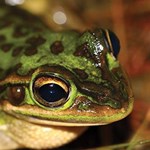
Prioritising conservation efforts and communicating conservation opportunities in urban areas
6.3.6
More than 370 EPBC-listed threatened species can be found in Australian cities and towns. Yet we understand little about how to promote the management and recovery of threatened species in urban areas.
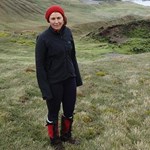
Learning from success and failure in threatened species conservation
6.4
The project examines the reasons behind success and failure in the management of threatened species and communities. It will identify the factors that are common to successful recovery projects.
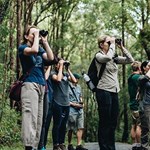
Citizen science for threatened species conservation and building community support
6.5
Citizen science is surging in Australia, and represents a huge opportunity to engage the public with threatened species, to capture valuable data and to deliver crowd-sourced on-ground conservation action. This project will deliver protocols to guide the application of citizen science to threatened species monitoring and management.
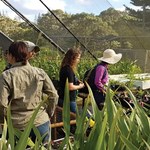
Key factors for effective partnering for threatened species recovery
6.6
This project will analyse the long-term value of partnerships in threatened species recovery and identify the governance arrangements that are most effective at building and maintaining partnerships for conservation outcomes.
Methods for measuring uptake and outcomes from environmental research
7.1
This project will use TSR Hub research as a case study to understand how research undertaken to contribute to environmental outcomes can influence change. The project will develop measures for assessing research outcomes while research is underway.
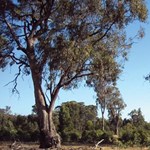
Conservation actions for Threatened Ecological Communities
7.2
Recovery planning for threatened ecological communities could be improved by a formal process for generalising knowledge on ecosystem dynamics in response to multiple threats. This project aims to build on current progress in using State-Transition-Models (STMs) to support management decisions across many listed southern Australian eucalypt woodlands.
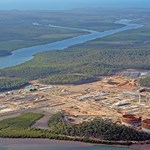
Assessing biodiversity and cultural values for single-site and multi-property development proposals in northern Australia
7.3
This project will examine how proactive, strategic planning can be harnessed to guide better impact assessments and decisions, and promote sustainable development in northern Australia’s Indigenous lands.

Cat impacts and management: Knowledge exchange for stakeholders
7.4
In this project, we will synthesise information on cat impacts, cat management and how to measure the management effectiveness of cat control and investigate the most appropriate means to disseminate this information.
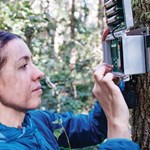
National monitoring priorities, process and prospectus for threatened species
7.5
Monitoring should be a critical component of recovery for threatened species and ecological communities. This project aims to develop plans for monitoring programs for key groupings of threatened species, plus costed pathways for their implementation.
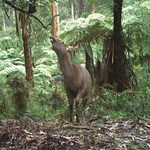
Managing impacts of feral and over-abundant herbivores on threatened species and ecological communities
7.6
Efforts to conserve many of Australia’s threatened species and ecological communities are thwarted by vertebrate herbivores. Each year huge amounts of money and effort are spent controlling populations of feral and overabundant native herbivores, developing new control techniques, and manage their herbivore impacts more cost-effectively.
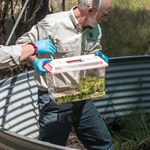
A knowledge synthesis to inform a national approach to fighting extinction
7.7
We propose to synthesise research and expertise held by managers, traditional owners and scientists across threatened species in Australia to generate and evaluate options for ensuring the persistence of threatened species, using the best available scientific and policy knowledge.
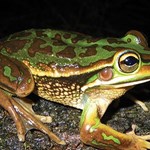
Translating research findings on offsets and strategic assessment to practice and policy
7.8
This project will translate the findings from Project 5.1 and its subcomponents to a series of user-friendly videos. These explanatory videos will step viewers through the key technical principles and concepts involved in offset design and delivery, as well as the key principles of strategic planning.

Integrated environmental assessment to inform environmental decisions
7.9
Using northern Australia as the case study region, the project will develop and demonstrate the value of a holistic integrated environmental assessment approach to strategic decision-making for sustainable development.
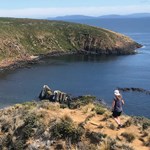
Informing island eradications: Lessons learned
7.10
This project will support better conservation decisions for managing Australia’s islands by synthesising knowledge and learning from previous management and eradication of invasive species on islands, and some of the impacts of management on island ecosystems.
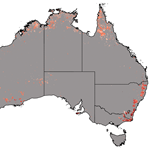
Designing rapid on-ground reconnaissance surveys for post natural disaster (fire) to assess the status of species, ecological communities, habitats and threats
8.1.1
The 2019–20 bushfires were unprecedented in terms of their scale, intensity and timing. On-ground reconnaissance surveys are crucial for assessing the impact of the fires on native species. This project conducted a gap analysis of post-fire surveys across Australia for federally listed priority vertebrates.
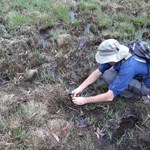
Design for post-fire impact monitoring, including synthesis of current monitoring projects
8.1.2
The 2019–20 bushfires in southern Australia severely impacted populations and ecological communities. This project will consider where, how, and when to monitor for all priority vertebrate, invertebrate and plant species identified by the Wildlife and Threatened Species Bushfire Recovery Expert Panel.
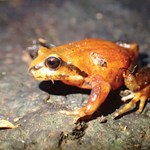
Post-fire impact assessment for priority frogs
8.1.3
The impact of fire on Australian frogs, especially the 37 listed threatened species, is poorly known. This project aims to provide new knowledge on frog responses to fire through targeted on-ground surveys focusing on the Gondwana Rainforest World Heritage areas.
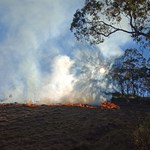
Indigenous aspirations and capacity for bushfire response
8.2.1
This project will help to identify some practical measures that can enable Indigenous leadership in future cultural burning and land management in southern regions of Australia.
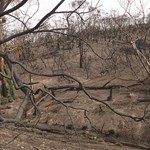
Fire-affected invertebrates: Priority species and management response
8.3.1
The project seeks to (i) develop a justified listing of those invertebrate species most affected by the 2019–20 Australian wildfires in southern and eastern Australia, and whose recovery is most needing management support; and (ii) identify the post-fire threats and management priorities for those species.
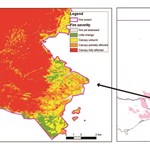
Effect of fire severity on the response of populations of priority wildlife species
8.3.2
In this project, we will build on work by the Wildlife and Threatened Species Bushfire Recovery Expert Panel to consider spatial variation in fire severity, as well as variation in species’ responses to fires of different severity.
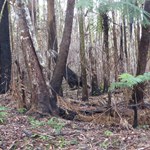
Genetic assessment of priority taxa and management priorities
8.3.3
This project will summarise genetic information that is available for priority vertebrate species to enable the Expert Panel and state and territory agencies to make better informed assessments of the impacts of the fires on those species.
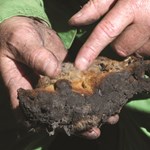
Estimating wildlife mortality during bushfire
8.3.4
This project will review the literature on wildlife mortality during fire and help provide a framework for obtaining rapid mortality estimates during future fires in Australia and around the world.
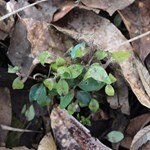
Fire and rust: The impact of myrtle rust on fire regeneration
8.3.5
This project aims to determine the impact that myrtle rust (caused by the rust fungus Austropuccinia psidii) is having on the regeneration of Myrtaceae following the 2019–20 wildfires in a range of ecosystems across Queensland and New South Wales.
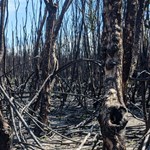
Collation of summary of 2019–20 bushfire impacts and emergency responses on freshwater fish
8.3.6
The project aims to collate information on the impact of fires on fish (evidenced by fish kills) and capture what each state/ territory did for the protection of aquatic fauna in response to the 2019–20 fires. The project will explore what worked and what didn’t, and provide suggestions for the future.
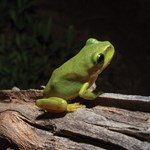
Impacts of post-fire ash and run-off sediment on Australian freshwater aquatic fauna
8.3.7
This project will examine how Australian freshwater fish, frogs and invertebrates are affected by acute and chronic exposure to post-fire water quality changes such as elevated temperature, low oxygen levels and ash and sediment run-off.
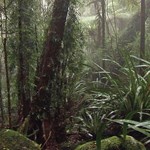
Survival and recovery of threatened animal species in fire-affected Gondwana Rainforests
8.3.8
This project aims to understand how and where threatened mammals, reptiles and frogs in the Gondwanan Rainforest World Heritage Area of southern Queensland and northern New South Wales have been affected by the 2019–20 fires, which previously seldom burned.
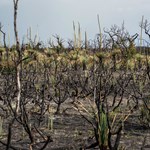
Post-fire changes in feral cat density across Kangaroo Island
8.4.1
The project builds on existing data to understand how a large-scale fire has impacted feral cat densities on Kangaroo Island. Intensive camera trap sampling from September 2017 to December 2018 allowed for reliable estimates of the densities of feral cats to be made at nine sites across Kangaroo Island.
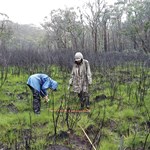
Fire-related risks to, and conservation strategies for, ecological communities
8.4.2
This project will review and synthesise available data to assess risks to priority rainforest and peatland ecosystems affected by the 2019-20 bushfires in eastern Australia.
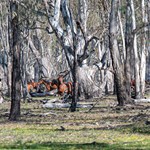
Managing the impacts of feral herbivores following regional-scale wildfire
8.4.3
This project will review the exposure of threatened species and ecological communities to wildfire and herbivore impacts in wooded ecosystems of south eastern Australia. It will also develop case studies to explore risk and management opportunities.
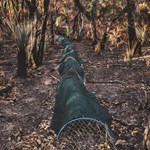
Review of faunal responses to fire-associated management actions
8.4.4
This project is collating and synthesising knowledge on management actions to help recover wildlife in fire-affected habitat, including in all fire-prone vegetation communities and responses by terrestrial and freshwater vertebrate and invertebrate fauna.
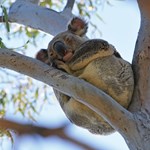
Better managing fires and their impacts for koala conservation
8.4.5
This project aims to develop new insights into how to better manage fires and their impacts to ensure the long-term persistence of koalas in fire-prone parts of the species’ range.
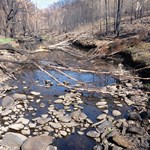
Protecting threatened species and communities during wildfires: Learning from the 2019–20 fires
8.5.1
Many conservation managers lacked prior information and suitable planning frameworks to help prioritise and guide protection of threatened species and communities during the 2019–20 fires. This project addresses these gaps in knowledge and developed a road map that encompasses recommendations for improvements identified during interviews.
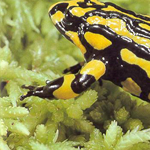
Translocation, reintroduction and conservation fencing for threatened fauna
4.1
This project will research the most feasible and cost-effective translocation strategies to boost the size and long-term viability of wild populations. This will include improved planning for, and implementation of, translocations of mammals, birds, reptiles and frogs.
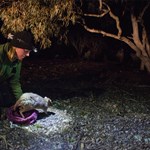
Reintroductions inside and outside fences in the ACT
4.1.2
This project is learning from, and providing strategic and technical support to a number of reintroduction programs within the ACT. This includes examining the feasibility of reintroducing a number of additional species to areas surrounded by a feral-proof fence, and a “beyond-the-fence” trial release of eastern bettong.

Learning from mammal translocations
4.1.3
Australian Wildlife Conservancy is undertaking a major project to re-establish populations of 10 regionally-extinct mammals, including nine threatened species, at Mt Gibson Wildlife Sanctuary, Western Australia. The reintroductions will integrate monitoring and research activities in order to improve the conduct of future reintroductions in Australia.
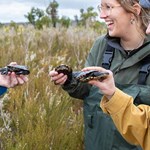
Assisted colonisation of Australia’s rarest reptile: The western swamp turtle
4.1.4.1
In a world first, this project is field-testing the viability of introducing one of Australia’s rarest reptiles, the Critically Endangered western swamp turtle, to wetlands more than 300km south of its native range, in an effort to mitigate the negative impacts of climate change.

Optimising the timing for assisting the colonisation of threatened montane frogs
4.1.4.2
In this project, we are developing optimisation models for two Endangered species (the northern corroboree frog, and Spencer’s tree frog) to determine the ideal timeframe for when each species could be relocated to suitable habitats that are currently outside their natural range.
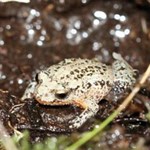
Improving conservation outcomes for critically endangered white-bellied frogs
4.1.4.3
The Critically Endangered white-bellied frog has undergone continued population declines, despite careful management. This project will target knowledge gaps around factors contributing to population declines, as well as better resolve the specific habitat and hydrological requirements of this species.
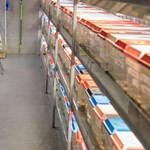
A decision tool for evaluating whether ex situ management is appropriate for a threatened species
4.1.5
Ex situ management (e.g., captive breeding) can be used to increase the viability of a species in the wild by supplementing or creating wild populations. This research project will create an accessible decision tool to aid decision-making and planning for ex situ management of threatened species.
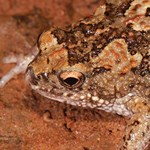
Can assisted gene flow increase the resilience of terrestrial-breeding frogs to a drying climate?
4.1.6.1
This project will investigate whether assisted gene flow could enhance the resilience of two species of non-threatened amphibians from the south-west of Australia to increasingly dry conditions.
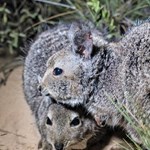
Genetic management and population modelling of translocated fauna
4.1.6.2
This project focuses on the genetic management of mammals translocated as part of a major restoration project underway on Dirk Hartog Island that is led by Western Australia’s Department of Biodiversity, Conservation and Attractions (DBCA). Focal species include the Shark Bay bandicoot, the banded hare-wallaby and the dibbler.
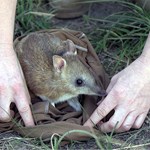
Genetic rescue of mountain pygmy possums and eastern barred bandicoots: Understanding the genomic consequences of genetic rescue
4.1.6.3
Genetic rescue strategies are becoming more important in many threatened species conservation programs. However, an understanding of genomic consequences of a genetic rescue is currently lacking. In this project we will dissect the genomics of genetic rescue in two Australian threatened species, the mountain pygmy-possum and the Victorian eastern barred bandicoot.
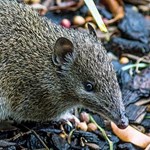
Enhancing ecosystem function by reintroductions of digging mammals
4.1.7
Many of Australia’s threatened species, such as bettongs and bandicoots, are considered ecosystem engineers due to the important functional role they provide in landscapes. This project examines what happens to ecosystem processes at sites where digging mammals have been reintroduced.
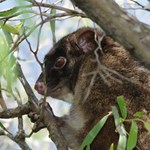
Understanding genomic variation in the western ringtail possum for adaptive conservation
4.1.8
The western ringtail possum is Critically Endangered. It faces numerous threats that have resulted in highly fragmented populations, including habitat loss, predation by introduced predators and climate change in the south-west of Australia.
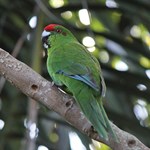
Genetic analysis of the Norfolk Island morepork and green parrot
4.1.9
The Norfolk Island morepork (or boobook), Ninox novaeseelandiae undulata, and the Norfolk Island green parrot, Cyanoramphus cookii, are both endemic to Norfolk Island and are listed as Endangered under the EPBC Act. Both are priority species under the Threatened Species Strategy and a priority for management by Norfolk Island National Park.
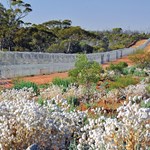
Re-establishing critical weight range mammals in the northern wheatbelt of Western Australia: Reintroductions to a safe haven free of introduced predators
4.1.11
Introducing threatened mammals to feral predator-free safe havens (islands and fenced reserves) has made an important contribution to their conservation, and the establishment of additional safe havens is a key action of the Australian Government’s Threatened Species Strategy.

Reintroduction plan to rescue the northern eastern bristlebird
4.1.12
The ecologically unique northern population of the eastern bristlebird is among the most threatened Australia birds. This project will develop an emergency action plan that will guide on-the-ground actions to stop the decline, increase the wild population and directly improve long-term persistence.
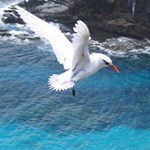
Saving species on Australian islands
4.2
This project will help shape on-ground actions on Australian islands – which are havens for threatened species. It will develop information to more effectively protect Australia’s island biodiversity and create safe refuges for species at risk.
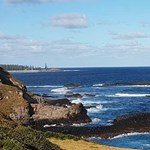
Creation and analysis of a national database of threatened species on Australian islands
4.2.1
This project is establishing a national database of threatened species across all of Australia’s islands, which is helping fill these knowledge gaps, as well as beginning the process of understanding how to best conserve our island-based plants, animals and ecosystems.
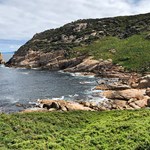
Actions for saving threatened species on priority islands
4.2.2
Although islands are havens for biodiversity, more species extinctions have occurred on Australia’s islands than on its mainland. This project looked at case study islands, focusing on eradicating cats and managing other invasive species to improve threatened species conservation on Stradbroke Island, Maria Island and Bruny Island.
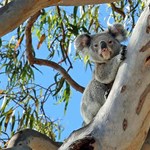
Optimising feral animal control to benefit threatened species on South East Queensland Islands
4.2.2.1
This research project aims to support invasive species (red fox, feral cat) eradication planning on Minjerribah (North Stradbroke Island). By gathering relevant local knowledge about eradication strategies, feasibility, community values and time preferences, the project will better inform management objectives.
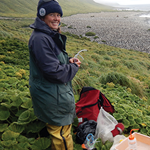
Post-eradication monitoring on Macquarie Island
4.2.3
Sub-Antarctic Macquarie Island has been the object of Australia’s most ambitious and expensive eradication program ending in 2014, with cats, rats, mice and rabbits eradicated. This project will examine different aspects of species and ecosystem recovery on the island following the eradication program
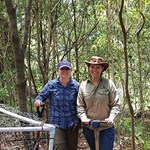
Norfolk Island threatened species conservation
4.2.4
This research seeks to examine the mechanisms driving native plant recruitment, along with an assessment of flora–fauna interaction networks, particularly native plant interactions with invasive weeds, rats and chickens on Norfolk Island. It will identify and quantify key threats and barriers to recruitment of native plant species.
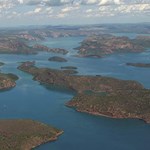
Protecting threatened quolls and other biodiversity on Kimberley islands from cane toads
4.2.5
This research will use existing data to predict future invasion by cane toads of Australian islands, particularly the Kimberley islands. This information is important for prioritizing surveillance action on these islands in order to conserve toad-sensitive species such as the endangered Northern Quoll.
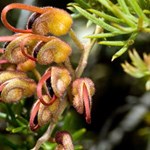
Threatened plant translocations
4.3
Translocations are being increasingly used in threatened plant recovery programs. The outcomes of past translocation programs have often been poorly documented or unpublished. This makes it hard to learn from the past experiences, to adapt and improve techniques in response to outcomes or to determine if investments have been worthwhile.
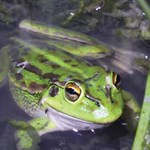
Identifying and managing refuges from threats
4.4
Refuges are important to many species, as they allow many species to survive environmentally stressful times, like droughts, fires and disease outbreaks. While fixed refuges like mountain tops can be easy to identify, many species rely on temporary refuges which move in time and space.

Threatened bird conservation in Murray-Darling Basin wetland and floodplain habitat
4.4.7
This project is designed to build a better understanding of how threatened bird species use the wetland and floodplain environments of the Murray–Darling Basin.
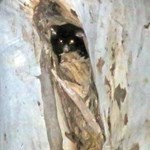
Mapping distributions, threats and opportunities to conserve the greater glider
4.4.8
This project will inform landscape management actions and recovery planning for the greater glider across its whole range by mapping threats and opportunities for management, and improving predictions of species’ persistence and range changes.
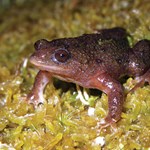
Modelling distributions of species under environmental change
4.4.10
This project informs and updates Department of Agriculture, Water and the Environment (DAWE)’s current practices for species distribution modelling under future climate change.
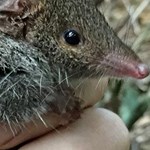
Using detection dog techniques to conserve Queensland’s Endangered montane species
4.4.11
Three Endangered species survive only in tiny populations in small areas of particular mountain ranges in Queensland: two mammals ranked in the top 20 Australian mammals most likely to go extinct (the carnivorous marsupials black-tailed dusky antechinus,
